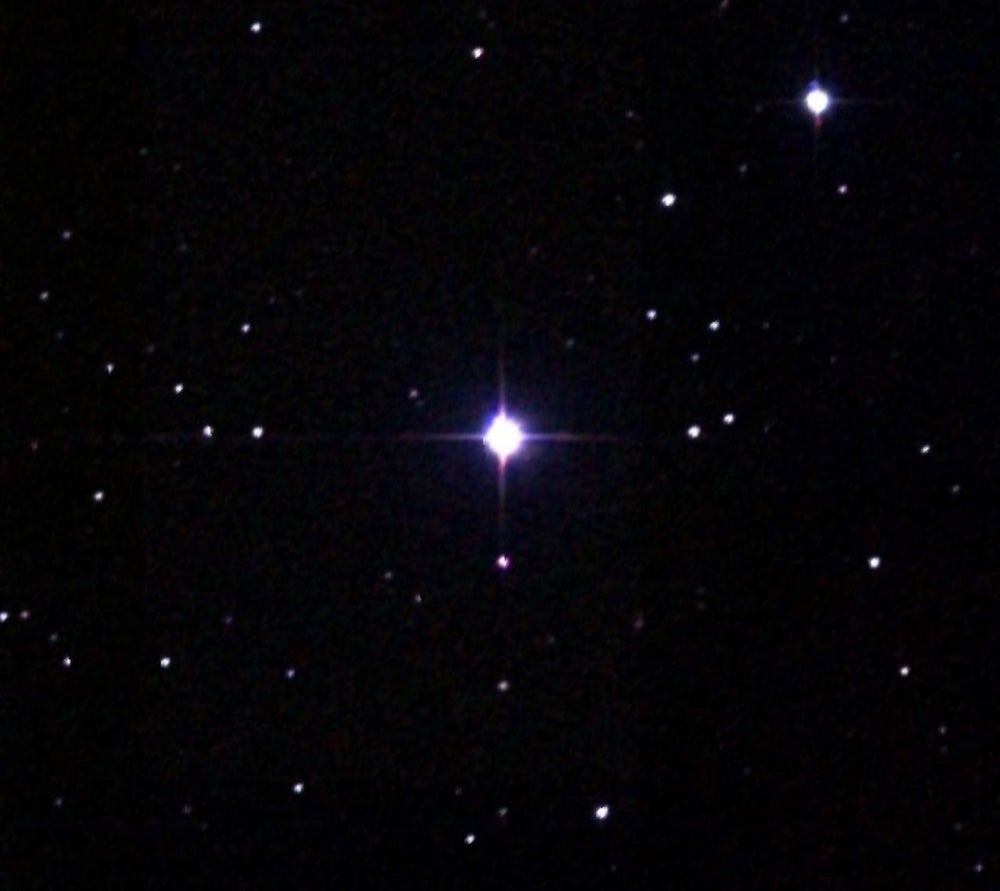
Kapteyn’s Star, a 9th-magnitude red subdwarf, speeds through space with a proper motion second only to Barnard’s Star. This nomadic wonder is visible in the northern reaches of the constellation Pictor the Painter. The star moves to the southeast at 8.7″ per year, or the apparent diameter of the Moon every two centuries. The star’s rapid apparent motion is due to its proximity (12.8 light-years away) and its high velocity (150 miles per second [245 km/s]) toward our Sun.
Kapteyn’s Star is also the nearest star to our Sun that does not belong to the Milky Way’s disk but to its halo, the spherical component of the galaxy made of older stars with fewer heavy elements. Peculiarly, Kapteyn’s Star orbits our galaxy backwards. Astronomers now believe the star may have once belonged to a dwarf galaxy consumed by the Milky Way early on in its history — the same dwarf galaxy that is now the great globular star cluster Omega Centuri. In 2014, it was announced that Kapteyn’s Star had two possible planets, one of which, Kapteyn c, is a Neptune-like exoplanet.
The star owes its discovery to the efforts of two individuals. In 1897, Dutch astronomer Jacobus Kapteyn noticed that a star was missing on a photographic plate taken at Cape Observatory in South Africa. The Scottish astronomer Robert Innes solved the mystery when he found the missing star east of its original position while surveying the southern stars from the Cape with a 7-inch refractor.









